Step Inside This Underground Cathedral, Carved Into the Walls of an Abandoned Salt Mine
An old mine has transformed into a subterranean worship space, 650 feet underground
Some 650 feet underground in Zipaquirá, Colombia, worshippers kneel in front of an illuminated cross that stretches 16 feet in height to pray, surrounded by salty walls in a subterranean cathedral. The Catedral de Sal has multiple main sections illuminated by colorful lights: the three naves (complete with pew seating), the dome, and the Stations of the Cross. There’s also an array of sculptures and statuary throughout the cathedral and the tunnels leading to it.
This underground holy space began its life as something very different: a salt mine, the construction of which initially began in 1815. By 1876, workers had excavated four tunnels, removing rock salt from the walls, and by 1932, generations of miners had carved out a small altar and sanctuary where workers would pray for protection each morning before heading deeper into the mine. In the early 1950s, they decided to make it into something bigger, and began to carve a massive cathedral out of the salt. It opened officially in 1953 with a huge worship space complete with walkways and a basilica dome. The workers dedicated it to the patron saint of mines.
In 1990, however, the salt cathedral was shut down. The mine had been active throughout its construction, leaving it with structural problems that were deemed unsafe. Work on a new version began one year later, and the current cathedral opened in 1995, about 200 feet beneath the original. The design, which won an architecture contest, took four years to bring to life, and required structural improvements be made to the mine and the removal of about 250,000 tons of rock. The original cross in front of which the miners prayed back in the 1930s remained on display, but the capacity of the sacturay expanded greatly to welcome some 8,400 people. On the ground of the new cathedral, a original scultpure was also commissioned depicting the birth, life and death of Jesus.
Outside, the property is essentially a giant salt-themed park, complete with a climbing wall, a light show and a craft and souvenir market. Visitors can also watch a 3D movie about the history of salt mining in Colombia and check out an on-site salt mine museum. The Museo de la Salmuera is in the mine’s old processing rooms, where underground ponds were once used to separate the salt from the ore.
Most days, Monday through Saturday, tourists are also welcome to pile into the tunnels and caverns of the salt cathedral—but on Sundays, it’s still a functioning church, welcoming around 3,000 worshippers for Catholic services.
/https://tf-cmsv2-smithsonianmag-media.s3.amazonaws.com/accounts/headshot/JenniferBillock.png)
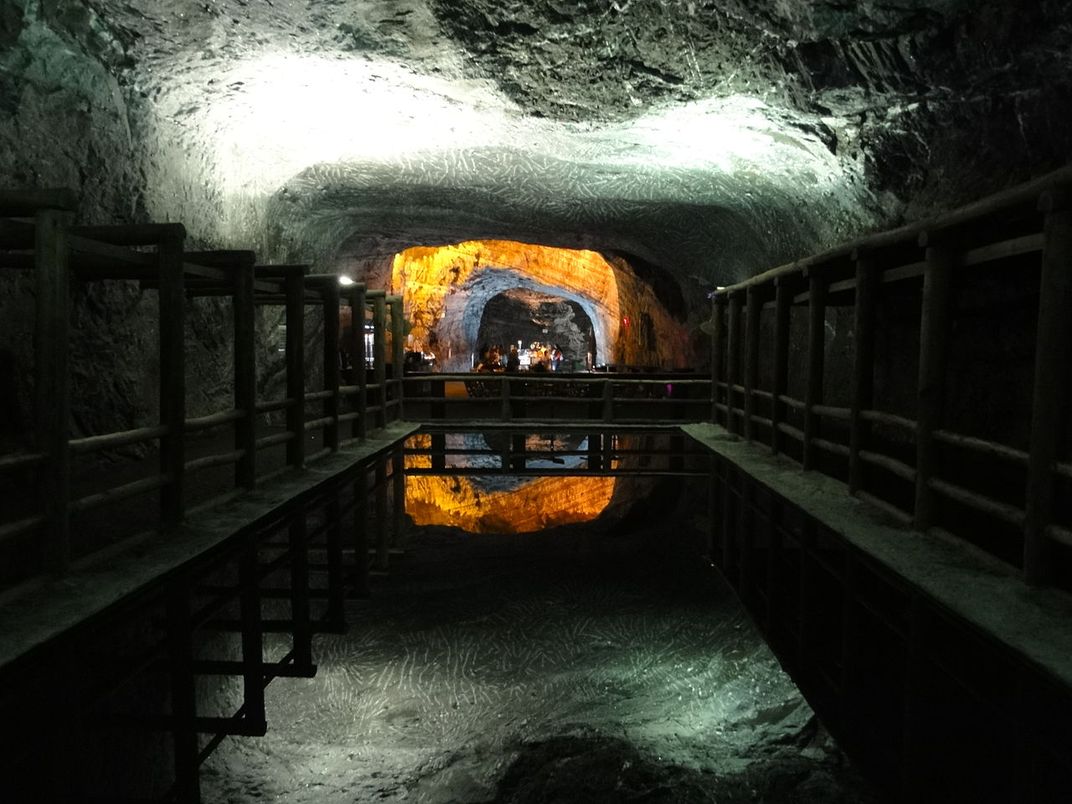
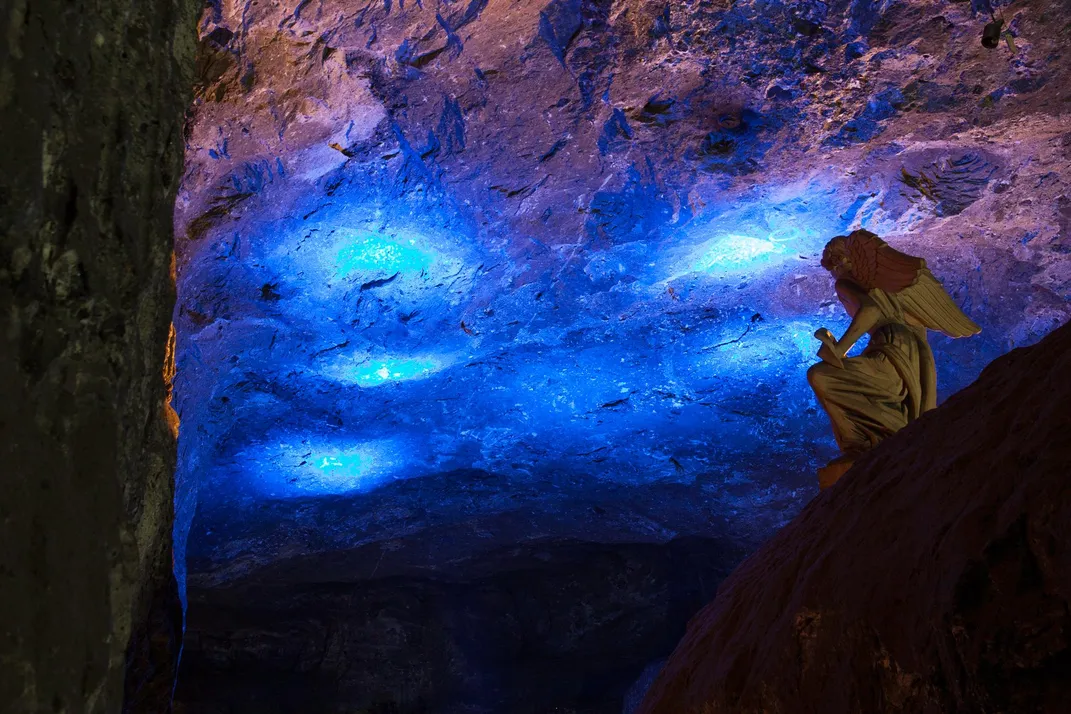
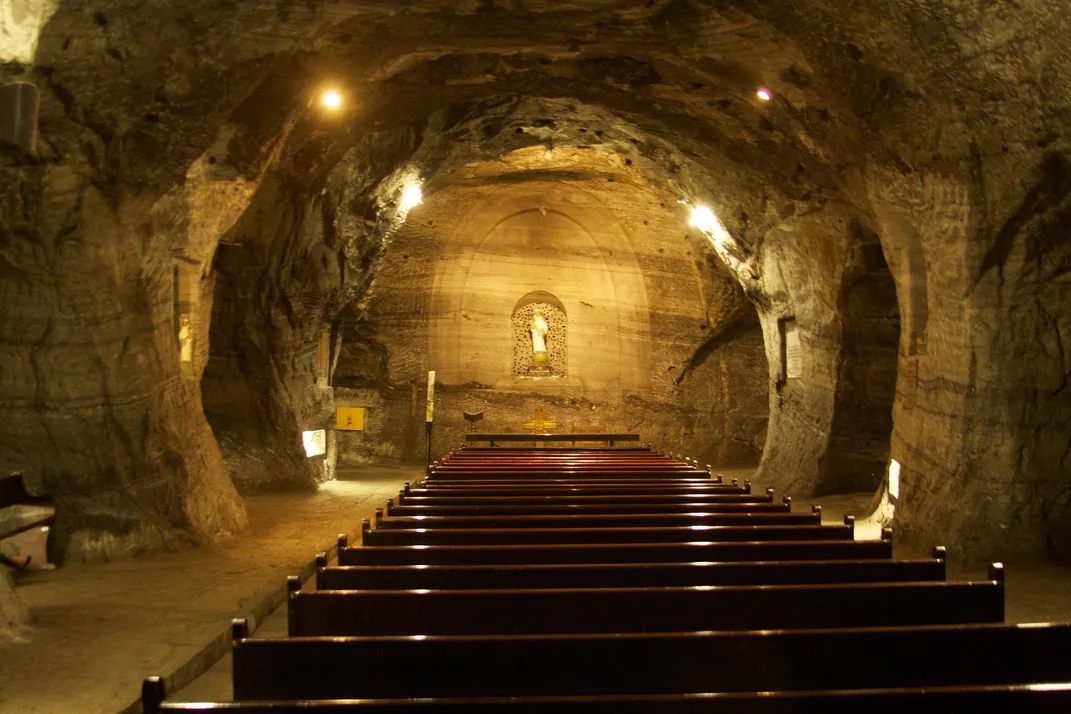
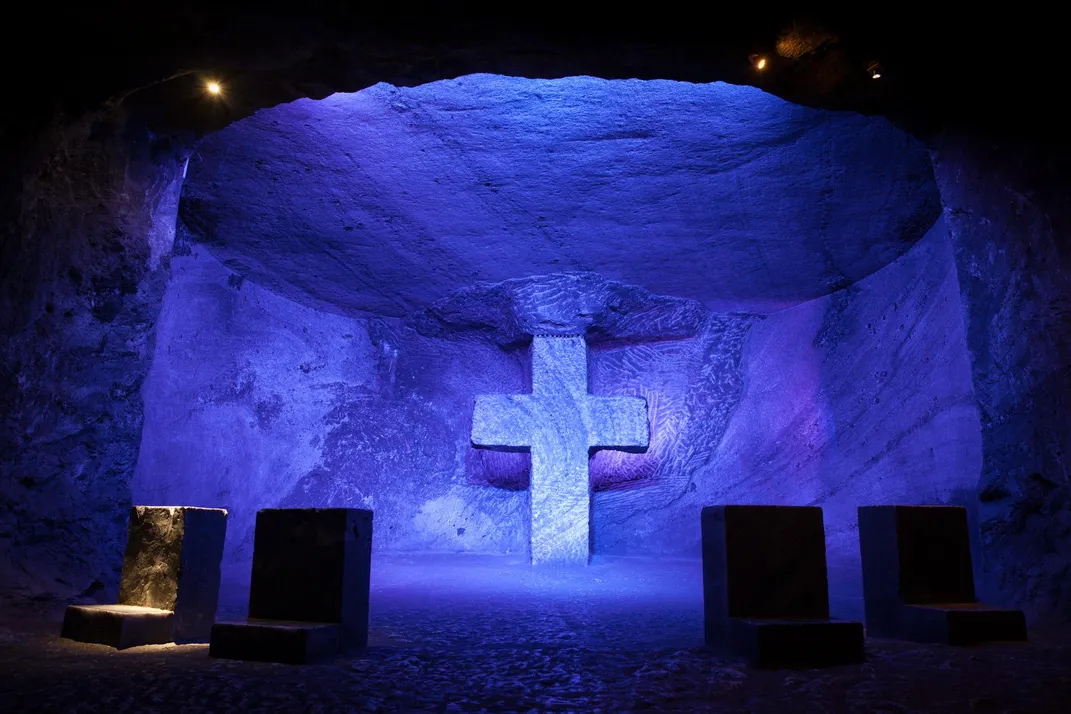
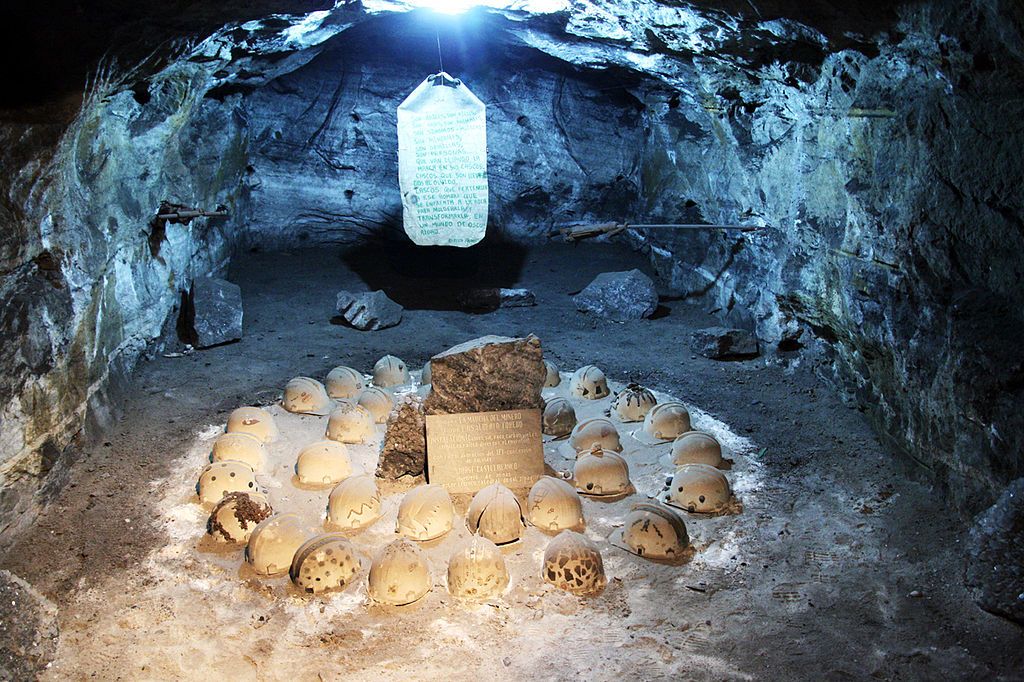
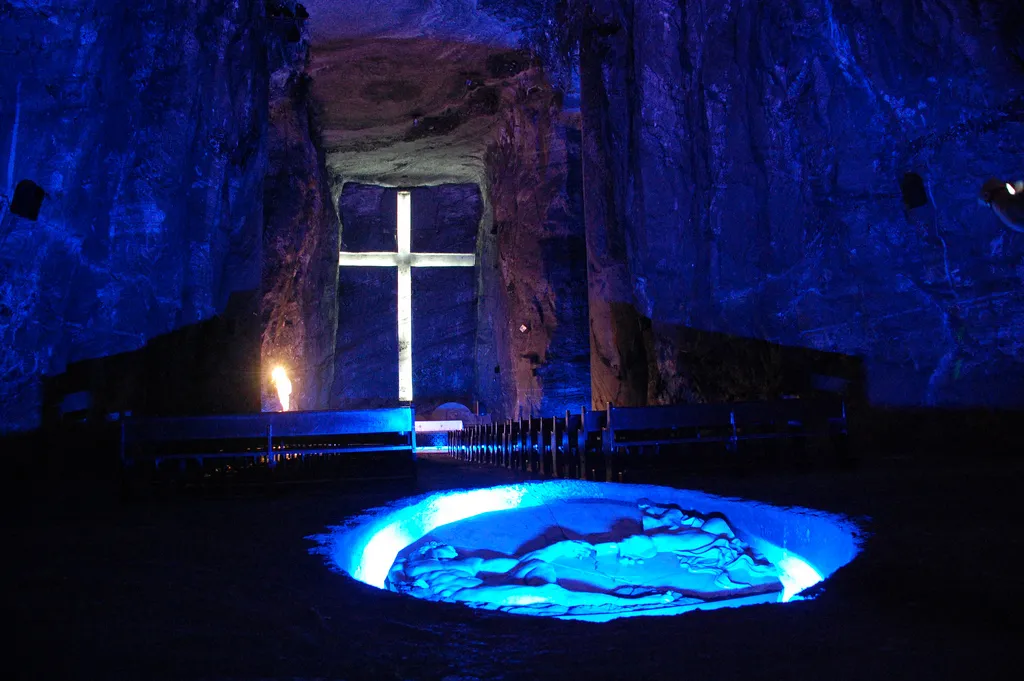
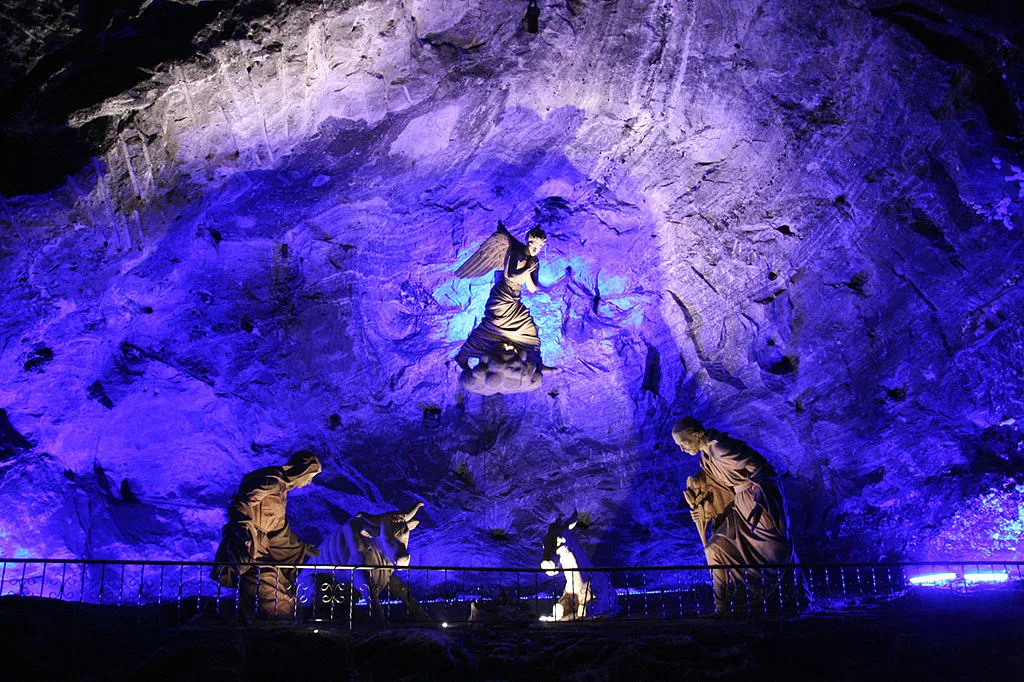
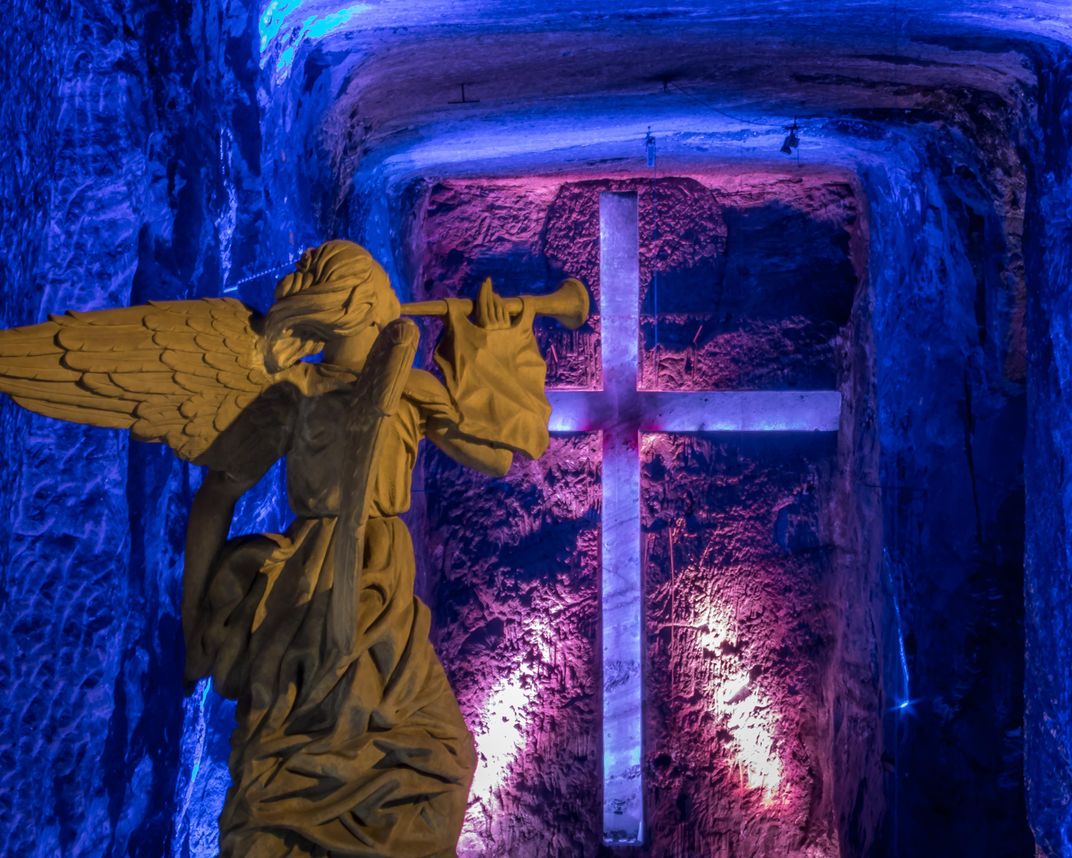
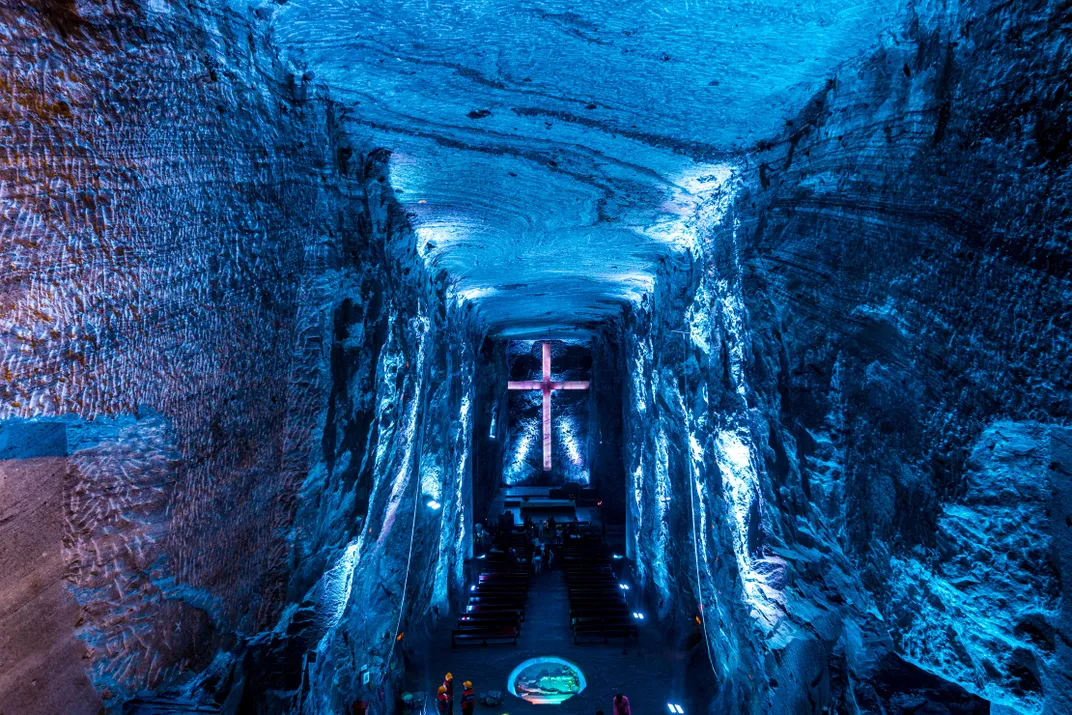
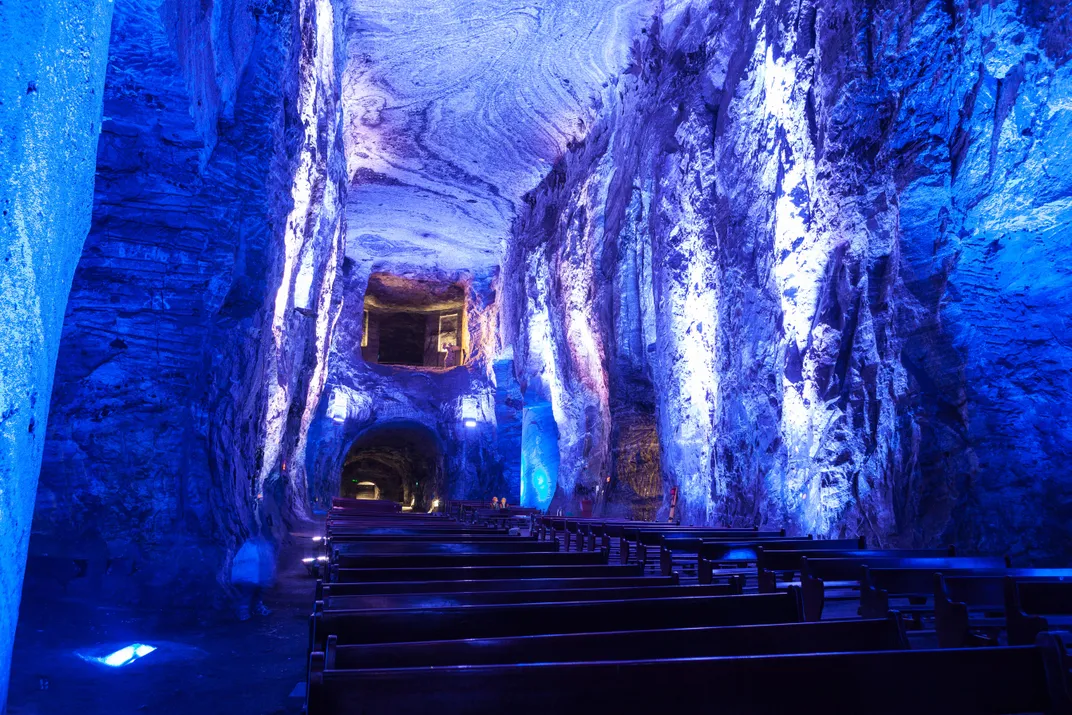
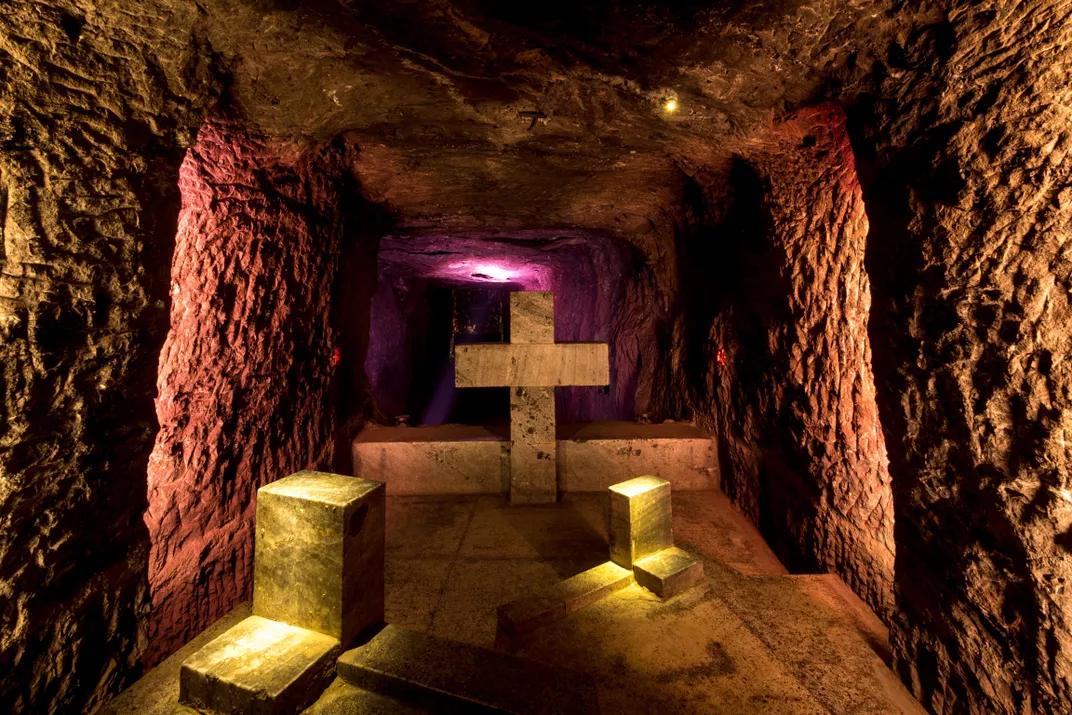
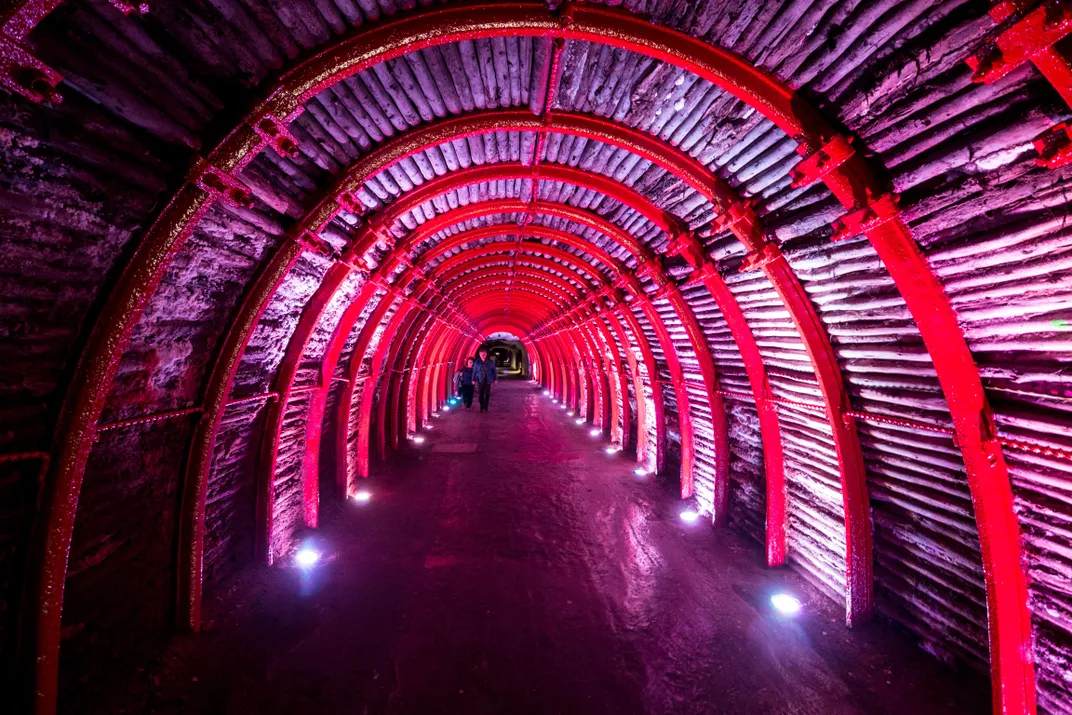
/https://tf-cmsv2-smithsonianmag-media.s3.amazonaws.com/accounts/headshot/JenniferBillock.png)